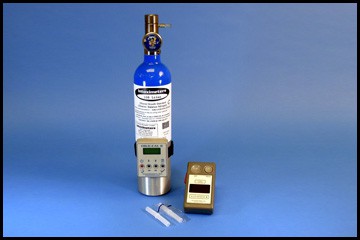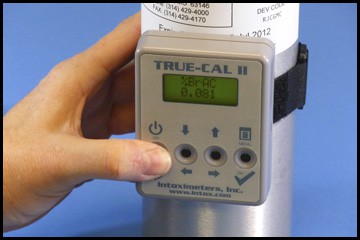New Alco-Sensor III Accuracy Check Procedure
These instructions are for an Accuracy Check procedure for Intoximeters new style Alco-Sensor III. If your instrument has a serial number equal to or greater than 1200000 you should follow this procedure.
An Accuracy Check should be performed periodically. The frequency should be determined by your Quality Assurance Program.
Below are basic Accuracy Check instructions for the Intoximeters Alco-Sensor III breath testing instrument.
Tools Required: Before beginning have these items available: instrument, calibration standard, new mouthpiece.
Alco-Sensor III Accuracy Check Procedure Part 1
|
|
Note: A calibration standard can be a:
|
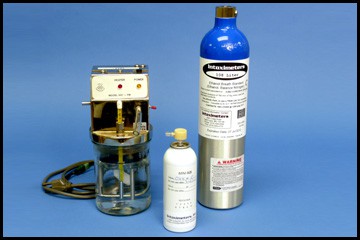 |
For this demonstration, a dry gas cylinder is used as the standard – value (at sea level) of.082%.
|
|
Alco-Sensor III Accuracy Check Procedure Part 2
Alco-Sensor III (serial # > 1200000)
|
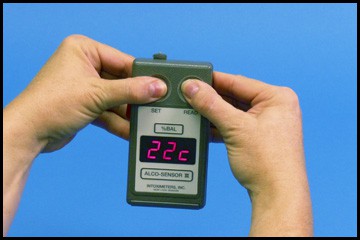 Temperature window display |
|
 READ button depressed ASIII displays .000 |
|
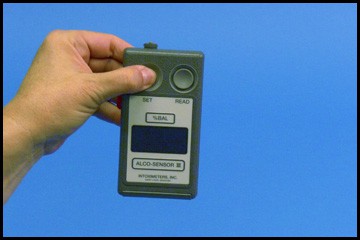 SET Button Pressed |
|
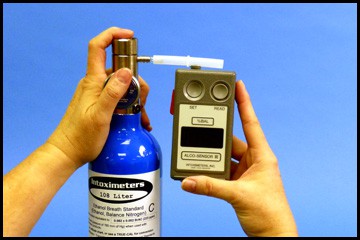 |
Alco-Sensor III Accuracy Check Procedure Part 3
Alco-Sensor III (serial # > 1200000)
True-Cal device displays .081. This is the expected value of the Standard used for this demonstration |
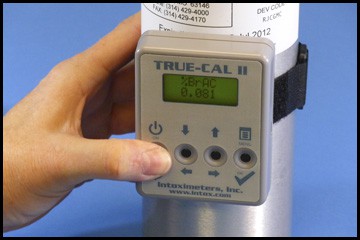 Expected value = .081 |
|
 Submit a gas sample 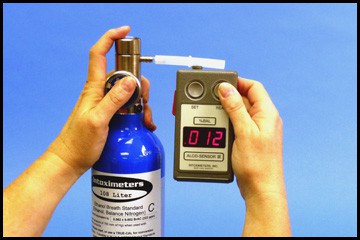 READ button is depressed |
|
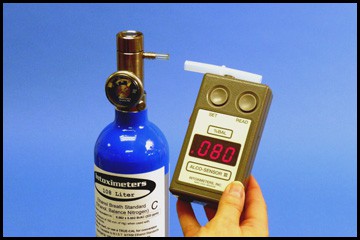 Observe final reading |
To demonstrate compliance with your program’s QAP it is best to keep a record or a Calibration Log for each device used for testing. The log should contain the results of all accuracy checks and calibrations for each instrument. This log may become a crucial piece of evidence should your test results be challenged. The log may include information such as:
- Date
- Time
- Procedure performed (Accuracy Check or Calibration)
- Name of Technician performing procedure
- Location
- Identification of the Standard including Lot Number of the Standard
- Expected Value of the Standard
- Result of the Accuracy Check or Calibration
For more information about procedures for your Intoximeters instrument, please refer to your
- Operator’s Manual
- or email Intoximeters Tech Support.
- or phone the Technical Support Department at 314-429-4000

